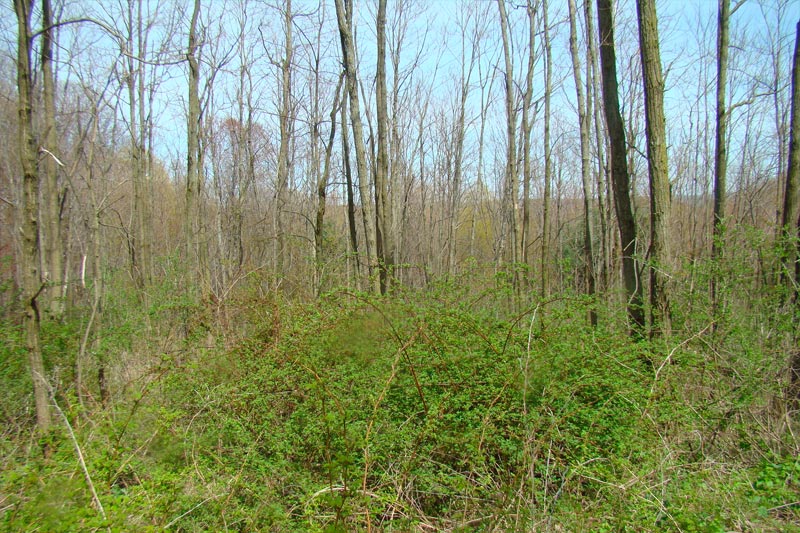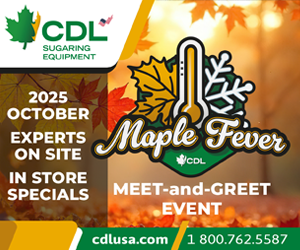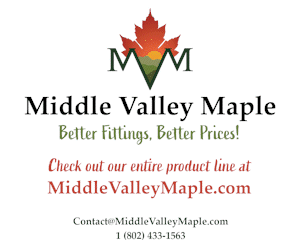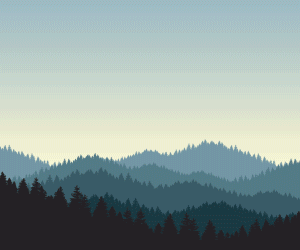Sugarbush Management
Buckthorn management in the sugarbush
Control of an invasive shrub
By PETER SMALLIDGE, CORNELL UNIVERSITY | AUGUST 24, 2018
Glossy buckthorn (Frangula alnus) and European buckthorn (Rhamnus cathartica) are common and can aggravate many ownership objectives. A variety of chemical and mechanical (i.e., organic) methods are available for the sugarmaker to control these species.
The buckthorns originated in Europe, northern Africa and western Asia. Their history of introduction into the US is poorly recorded, but many other examples of species that have become interfering were introduced in the middle 1800’s.
Glossy buckthorn was formerly known as Rhamnus frangula and is different but looks similar to the native alder-leaved buckthorn (Rhamnus alnifolia). Glossy buckthorn is a small shrub that is most common on moist soils, often near wetlands.
As with other interfering species, the interfering buckthorn species can dominate a site resulting in complicated access, reduced success with forest regeneration, and a reduction in plant species diversity.
Recommendations for the treatment of glossy buckthorn will usually apply to common buckthorn. Care should be taken to avoid mis-identification with the native non-invasive alder-leaf buckthorn (Rhamnus alnifolia). More information about these species can be found by a search for “buckthorn” at https://gobotany.newenglandwild.org/
Many interfering plant species become problematic because of a current of historic over-abundance of deer. Further, once an interfering plant is controlled, consideration for the plants that may occupy the site is warranted especially with high deer impact.
If deer impacts are currently high, removing the interfering plant won’t necessarily result in the desired outcome for the owner. A simple field measurement protocol is available to assess the extent of deer impact; a description is available at www.AVIDdeer.com
Control of interfering forest plants is guided by principles of Forest Vegetation Management (FVM). FVM includes (1) certain identification of the interfering plant species and understanding its biology, (2) inspection for the abundance of co-occurring desirable species that should be retained, (3) consideration of any current or planned management activities, deer impacts and site conditions that might enhance or complicate treatment, (4) an evaluation of the costs and logistics for all feasible treatment methods and modes (described below), and (5) a determination and strategy for those plants desired on the site after treatment.
Webinars about FVM are archived at www.youtube.com/ForestConnect
Methods of treatment are either mechanical (i.e., organic) or chemical. Both methods have advantages and disadvantages depending on the circumstances.
Modes of treatment are either selective or broadcast. Selective treatments will isolate and treat a single stem of the interfering species. Broadcast treatment are applied to an area and all stems of all species present are affected.
All treatments can be described by a method and mode, or an integration of methods and mode. For example, hand pulling is selective mechanical, and cut-stump is integrated because it involves cutting (mechanical) followed by an herbicide (chemical) treatment to the freshly cut stump.
The selection of a broadcast versus selective treatment for buckthorn or other woody interfering species depends on the number of stems per acre and the abundance of desirable species.
If a relatively low number of desirable species are intermixed with the interfering species, or if the total number of stems to be treated requires too much labor, a broadcast treatment may be more appropriate. Many of the treatments described below will include specific product information, none of which should be considered to imply an endorsement.
Herbicides can be an efficient and effective tool, but involve additional considerations. The use of herbicides in New York requires that the name of the target species be included on the product label. Chemical treatments are complicated by the fact that invasive species have only relatively recently been recognized here in New York, and only a few herbicides list these species on the label. Check with your state to see what is available.
Fortunately, many labels are being adjusted to address invasive plants. Also, home remedies and off-label applications of an herbicide are illegal. Herbicide treatments in general require extra care because it involves the use of a chemical, and specifically for glossy buckthorn to ensure there is not movement of the herbicide into nearby classified wetlands. Research data is scant, but movement to wetlands would typically result from a saturating rain within 12 to 24 hours of the herbicide application.
Labels for the herbicides in New York can be obtained at http://www.dec.ny.gov/nyspad/products All herbicide products described in this article are unrestricted in New York, and thus can be purchased without a pesticide applicators license. Check your own state's label restrictions before use.
A small area with scattered buckthorn may be appropriately managed with a selective treatment. Buckthorns typically sprout from the stump following cutting so some post-cutting treatment is required.
One mechanical treatment is a new strategy that uses black plastic baggies on cut stumps. This is a new product that appears to have good potential, but there is no apparent research to document its effectiveness. More information is available at www.buckthornbaggie.com Another selective mechanical option with small plants is to pull them. A potential disadvantage to pulling is that soil disturbance may stimulate the germination of seeds of the buckthorn or other undesirable species.
Because many non-native woody plants expand leaves before native species, a selective chemical foliar treatment in early spring can target the buckthorn with limited potential for collateral damage. The early emergence of buckthorn leaves may provide a window of opportunity of a couple weeks for a selective chemical foliar treatment. There are only few herbicides labeled in New York for foliar treatment of buckthorn.
An Internet search will provide vendors of these products. If there are no or few desirable species intermixed with the buckthorn, or overspray would result in limited collateral damage, then the foliar treatment could be extended into the growing season. If all circumstances allow, a foliar treatment may be the most efficient way to control a small area of small buckthorn. Because Gordon’s Brushkiller also acts by penetration through bark, care should be made to avoid overspray onto nearby desired woody stems, even though their foliage may not have emerged.
A second selective mechanical/chemical treatment is “cut-stump.” This treatment involves cutting each stem and applying an appropriate herbicide to the freshly cut surface. On large stumps, a chemical-grade spray bottle may be most effective.
On smaller stumps a sponge-type paint brush may be more efficient. With care, there will be little or no collateral damage. The cut-stump treatment is likely more labor intensive than a foliar treatment because it involves cutting the stem, handling the stem, and applying the herbicide. The advantage is the potential for treatment from June through October, and little to no collateral damage, or movement from the treated stem.
A third selective chemical treatment, more appropriate if there are few and larger diameter stems, is a basal bark treatment. Penn State University Cooperative Extension has a fact sheet on the general use of basal bark treatment, not specifically about control of buckthorn https://goo.gl/yZvnR6). For areas with small buckthorn, a basal bark treatment is not likely to be the best treatment option because of the effort and overspray when applying to small diameter stems.
Regardless of the treatment option selected, there are likely buckthorn seeds in the soil that will germinate. Scout the area to ensure that any mature, fruiting buckthorn are controlled.
Newly germinated seedlings should be controlled regularly, but certainly before they mature and produce fruit. Annually, inspect the treatment area for seedlings. Hand pulling may control these small plants if they are not too numerous or as time permits.
Patches of seedlings might also be controlled with a foliar spray or brush saw, essentially a broadcast treatment but in a localized area. Each subsequent year should produce fewer new seedlings and less effort.


































